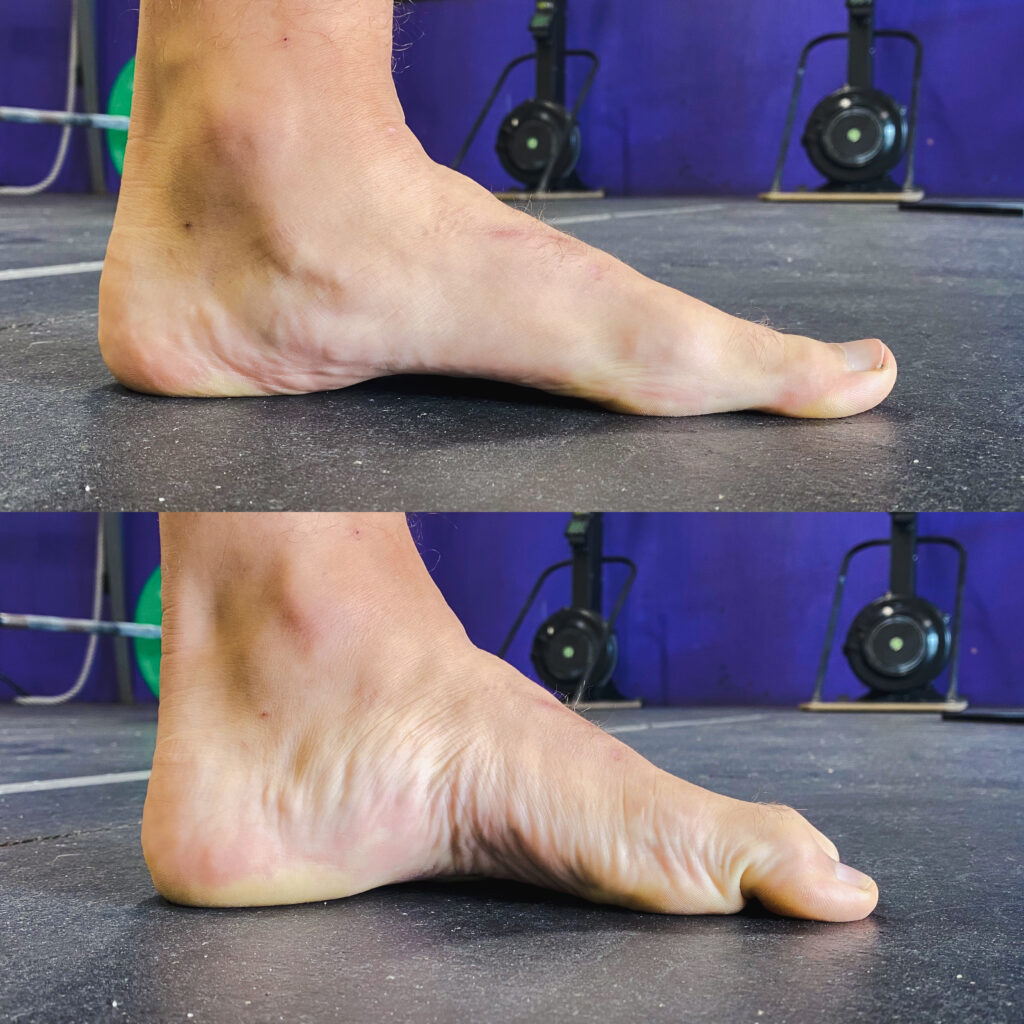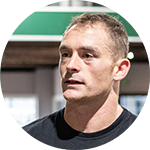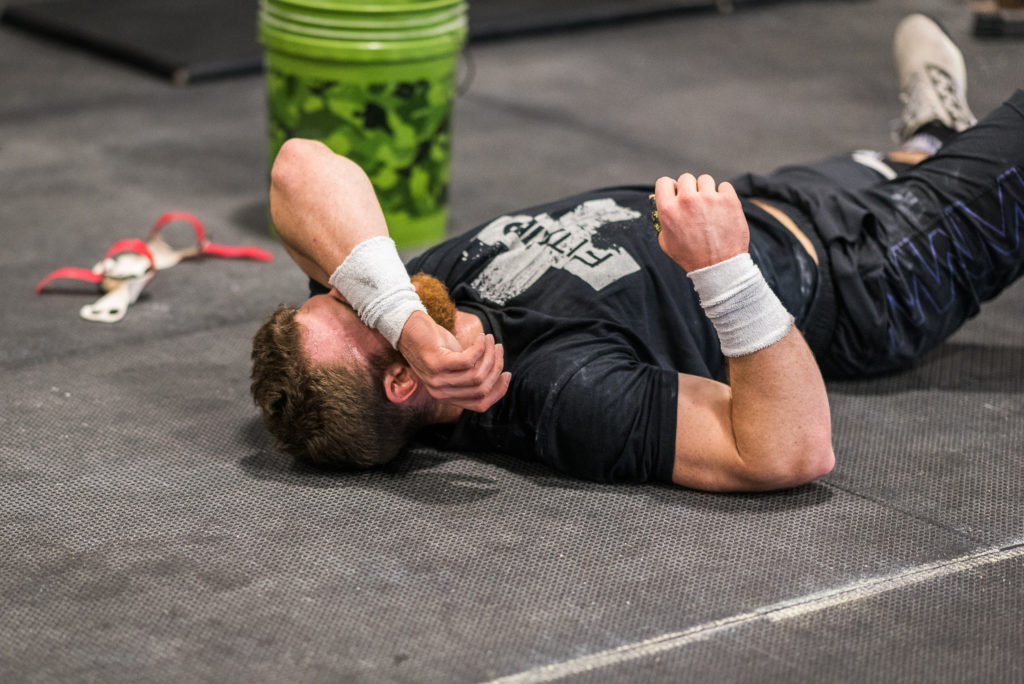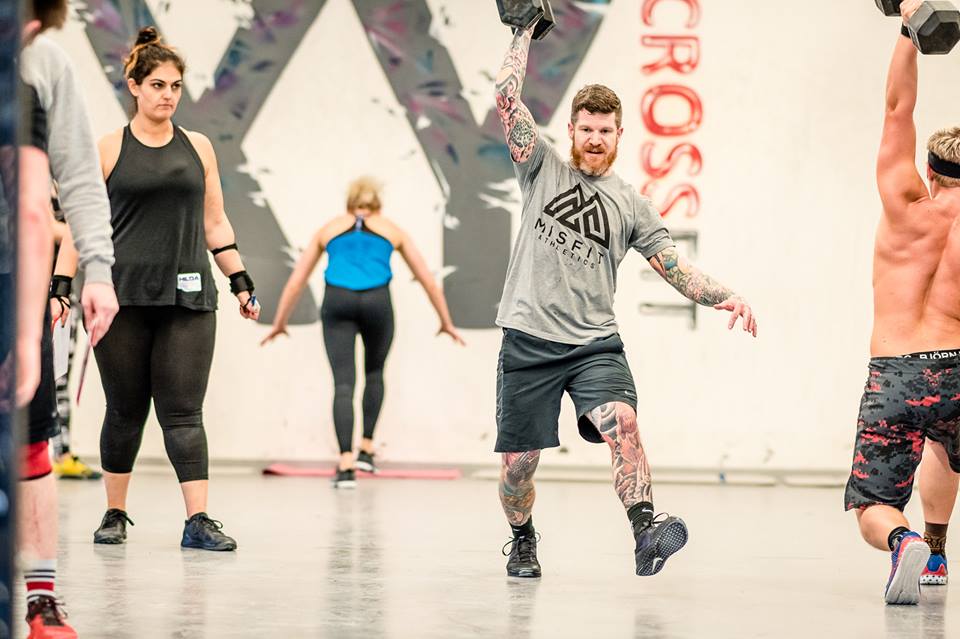Fix Your Feet, Fix Your Olympic Lifts

How often do you pay attention to your feet when you’re lifting? No, this isn’t a conversation about whether or not you should wear your OLY shoes or Nanos during your 6×3 Snatch work (although there’s a reason Olympians wear the shoes; yes, you should too). What I actually mean is: How often do you pay attention to what your feet are doing when training, and specifically during the snatch and the clean? How connected to the floor are you? How often do you analyze the weight distribution in your feet as you move? If the answer is “never,” it’s time to fix that. If you want to be a better lifter, you need to start paying attention to your feet. The three things I believe to be most important when it comes to your feet and performance in the Olympic lifts are stance, connectedness to the floor, and balance.
Stance
Your stance in any given movement predetermines your likelihood of success. Both Olympic Lifts have an optimal stance when starting, and they should be identical, which is hip-width apart. When you venture away from the ideal stance, you lose efficiency, which means a power reduction, which subsequently means a loss of intensity (INTENSITY = POWER = (FORCE x DISTANCE) / TIME). You all know how we feel about that. If your feet are too narrow or too wide, issues such as losing connection to the floor with your whole foot or valgus knees (knees caving in) appear both of which retard force production.
Connectedness
A proper stance merely sets you up to maximize your potential in any given movement, but it’s not only about where your feet are; it’s also about how much of your foot is on the ground. The amount of surface area your two feet occupy when going through any given movement directly relates to the power you can generate. We can look to physics for mathematical proof of this phenomenon (Force = Surface Area * Pressure), or you can get off your keister for a minute and try this simple power generating exercise. Stand up, wherever you are, and jump as high as you can while standing on your tip-toes. Next, jump as high as you can while keeping your entire foot on the ground. Which led to the better vertical leap? If you thought it was from tip-toes, try again. While the vertical jump is an extreme example, even subtle changes to the surface area, such as lifting your big toe off the floor during your 1st pull or a slight heel lift at power position, can lead to a significant reduction in force production. For this reason, when force production is at a premium, HELLO OLY LIFTS, it is absolutely vital to keep that entire foot on the floor while generating power.
Balance
Finally, a significant impairment in force production can be directly attributed to the loss of balance that is seen when less of your foot is on the floor. Your neurological system is incredibly intuitive, and your nervous system effectively controls your entire body 24/7/365. One of the main features of this system is kinesthetic awareness and proprioception. Both of which connect your body and mind to your environment. Similarly, the neurological system is ultimately responsible for force production via muscular recruitment. When your nervous system detects instability, it effectively acts as a governor, or a controller, of muscular recruitment and subsequently reduces muscular recruitment as a self-preservation mechanism. When maximizing force production, your body requires balance, which you can instantly improve by keeping more of your foot on the floor.
What Now?
To clarify exactly what you should be looking for when performing your Olympic lifts, I will break down exactly what you should be looking for during the first two pulls of your Olympic lifts.
The First Pull
The first pull begins with the barbell on the floor and ends when the barbell begins to pass the knee. The stance we are looking for in both the first is hip-width. An easy way to identify a hip-width stance is vertical legs when standing tall. If you notice any outward angle of your leg while standing tall, you are likely going too wide with your feet. In your first pull, your entire foot should be on the floor for the entire duration of this phase. Heel and big toe on the floor during your first pull are non-negotiable. Heel and big toe on the floor help you create a stable arch in your feet and increase the tension you’ll feel in your hips as you set up, both of which are critical when generating maximal force.

If you’re unfamiliar with how your feet should feel when setting up, think of your big toe like a claw. I want you to “dig” that claw (big toe) into the floor as you pull the barbell off the floor.
Armed with the correct stance and the proper connection to the floor with your heel and big toe down, you can now begin to think about where your balance is. In the context of the Olympic lifts, this means where your weight should be felt in your foot. In your first pull, you should feel the weight in the ball of your foot. Then, as your barbell begins to leave the floor, your weight should begin to shift from the ball of your foot to the midfoot. The progression from the ball of your foot to the arch sets you up nicely for your second pull, where your weight should be felt predominantly in the heel.
The Second Pull
The second pull begins as the barbell passes the knee and works its way back to the power position. Your stance should remain unchanged from your first pull to your second pull; your feet should still be hip-width apart.
Common Faults
The transition into the second pull (the beginning) and the conclusion of the second pull is where the two most common faults when it comes to connectedness to the floor happen. As the first pull is coming to a conclusion (bar passing the knee), we commonly see athletes begin to lose their connection to the floor. At this stage in the lift, most athletes know they are trying to get back to their heel, and as a means of trying to do so, we see rock backward, lifting the front half of their foot off the floor.
Then, because of this overcorrection, we also commonly see athletes overcorrect a second time. This second overcorrection is immediately rocking forward to the front half of their foot, slamming their toes down back onto the floor at the expense of their heels lifting off the floor as they reach power position.
Either fault leads to an inefficient pull and reduces the amount of force you can generate. The correction for both of these issues is the same, keep the entire foot on the floor; however *where* the weight should be *felt* is very different.
Feeling your weight in these varying parts of your foot helps center your balance as you pull the barbell from the floor. When the barbell is at the knee, your weight should be predominantly felt in the mid-foot/arch. You should feel balanced when your weight is in your midfoot at this stage in the lift because your posterior chain counterbalances the load in your hands. Next, as the barbell proceeds upwards towards the power position, the weight begins to shift further back in the foot, towards the heel, as the torso elevates to the vertical position and the knees rebend back under the bar. Weight in the heel keeps you balanced because the barbell is still trying to pull you forward, but not as egregiously as it did when it was at your knee. With your torso vertical, knees re-bent, your entire foot on the floor, and weight in the heel, it’s now time for your violent vertical hip extension and a more successful snatch or clean. If you’re someone who struggles with staying connected to the floor or if you struggle with your weight distribution there are various drills that can help you. Employing exercises like clean/snatch deadlifts, halting clean/snatch deadlifts (where you pause at various positions in the lift), or tempo clean/snatches are excellent drills to improve your Olympic lifts.
Refining and perfecting your Olympic lifts is an arduous and non-stop journey due to the sheer complexity of the movements. Remember, If you try to fix everything, you’ll fix nothing. So for the next week, start with your feet. Pay close attention to where your feet are, how much of your foot is on the ground, and where you feel your weight during your Olympic lifts. If you can stay singularly focused on your feet when training, I’m supremely confident you’ll see a new PR soon.
Written by Matt Sherburne



